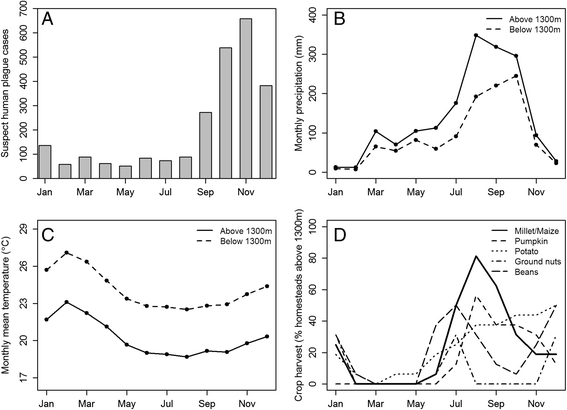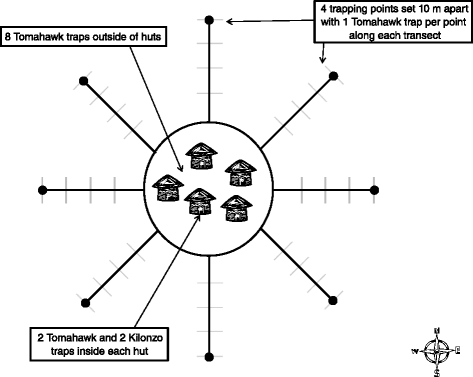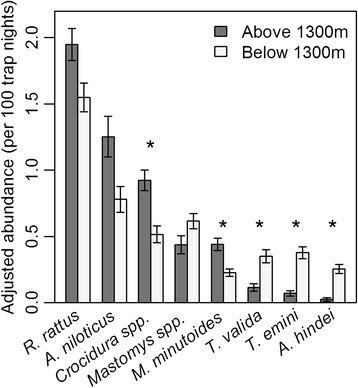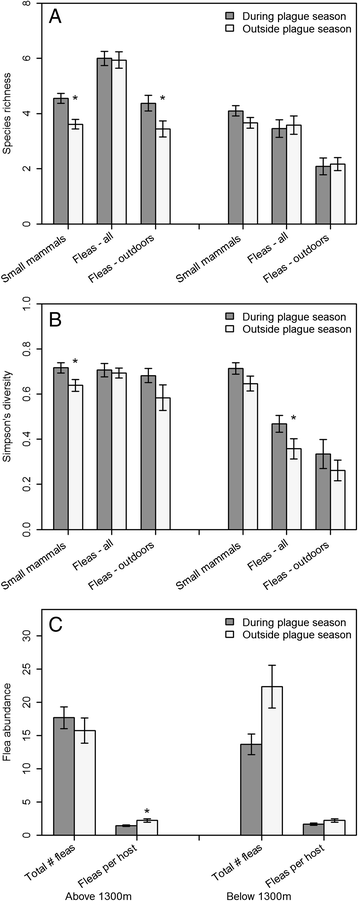Seasonal fluctuations of small mammal and flea communities in a Ugandan plague focus: evidence to implicate Arvicanthis niloticus and Crocidura spp. as key hosts in Yersinia pestis transmission
- PMID: 25573253
- PMCID: PMC4297414
- DOI: 10.1186/s13071-014-0616-1
Seasonal fluctuations of small mammal and flea communities in a Ugandan plague focus: evidence to implicate Arvicanthis niloticus and Crocidura spp. as key hosts in Yersinia pestis transmission
Abstract
Background: The distribution of human plague risk is strongly associated with rainfall in the tropical plague foci of East Africa, but little is known about how the plague bacterium is maintained during periods between outbreaks or whether environmental drivers trigger these outbreaks. We collected small mammals and fleas over a two year period in the West Nile region of Uganda to examine how the ecological community varies seasonally in a region with areas of both high and low risk of human plague cases.
Methods: Seasonal changes in the small mammal and flea communities were examined along an elevation gradient to determine whether small mammal and flea populations exhibit differences in their response to seasonal fluctuations in precipitation, temperature, and crop harvests in areas within (above 1300 m) and outside (below 1300 m) of a model-defined plague focus.
Results: The abundance of two potential enzootic host species (Arvicanthis niloticus and Crocidura spp.) increased during the plague season within the plague focus, but did not show the same increase at lower elevations outside this focus. In contrast, the abundance of the domestic rat population (Rattus rattus) did not show significant seasonal fluctuations regardless of locality. Arvicanthis niloticus abundance was negatively associated with monthly precipitation at a six month lag and positively associated with current monthly temperatures, and Crocidura spp. abundance was positively associated with precipitation at a three month lag and negatively associated with current monthly temperatures. The abundance of A. niloticus and Crocidura spp. were both positively correlated with the harvest of millet and maize.
Conclusions: The association between the abundance of several small mammal species and rainfall is consistent with previous models of the timing of human plague cases in relation to precipitation in the West Nile region. The seasonal increase in the abundance of key potential host species within the plague focus, but not outside of this area, suggests that changes in small mammal abundance may create favorable conditions for epizootic transmission of Y. pestis which ultimately may increase risk of human cases in this region.
Figures





References
-
- Gratz N. Plague Manual: Epidemiology, Distribution, Surveillance and Control. Geneva: World Health Organization; 1999. Rodent reservoirs and flea vectors of natural foci of plague; pp. 63–96.
-
- Stapp P, Antolin MF, Ball M. Patterns of extinction in prairie dog metapopulations: plague outbreaks follow El Nino events. Front Ecol Environ. 2004;2:235–240.
MeSH terms
LinkOut - more resources
Full Text Sources
Other Literature Sources
Medical
Miscellaneous

